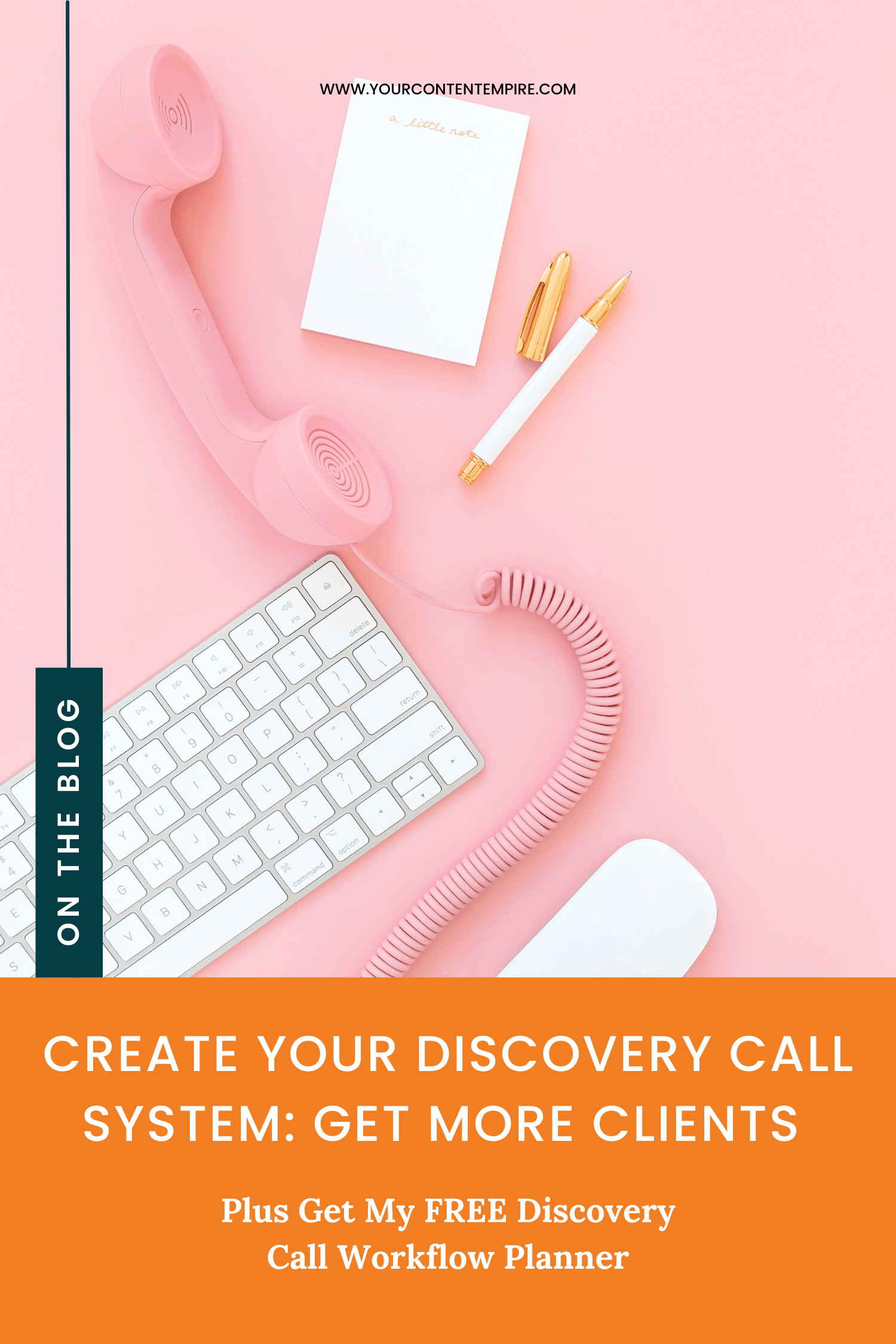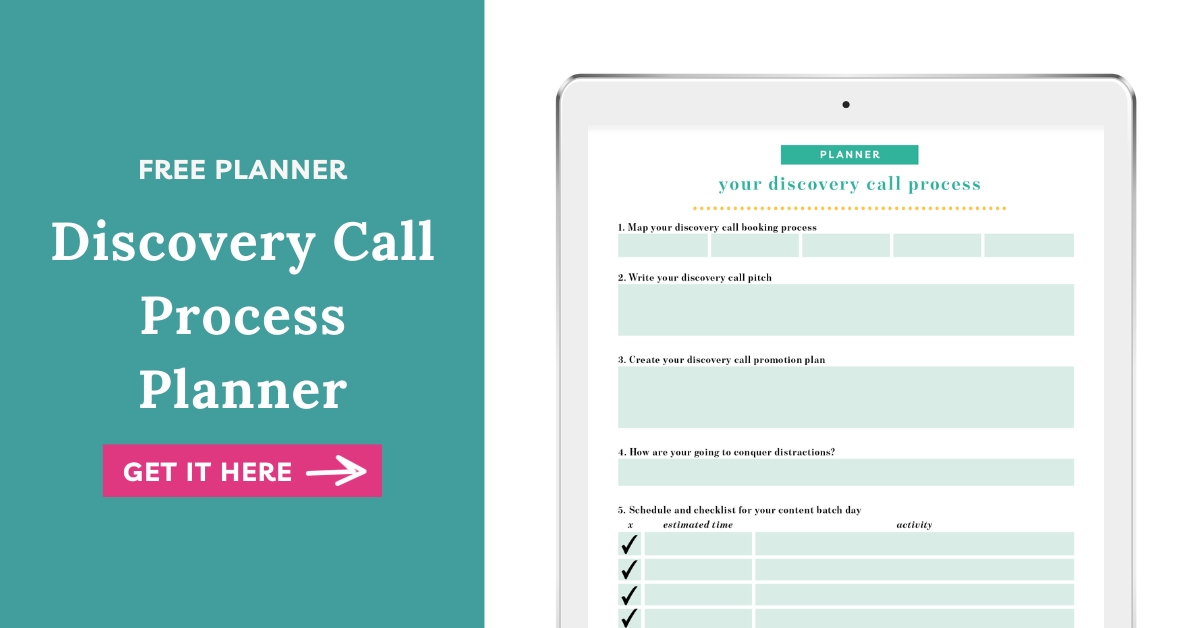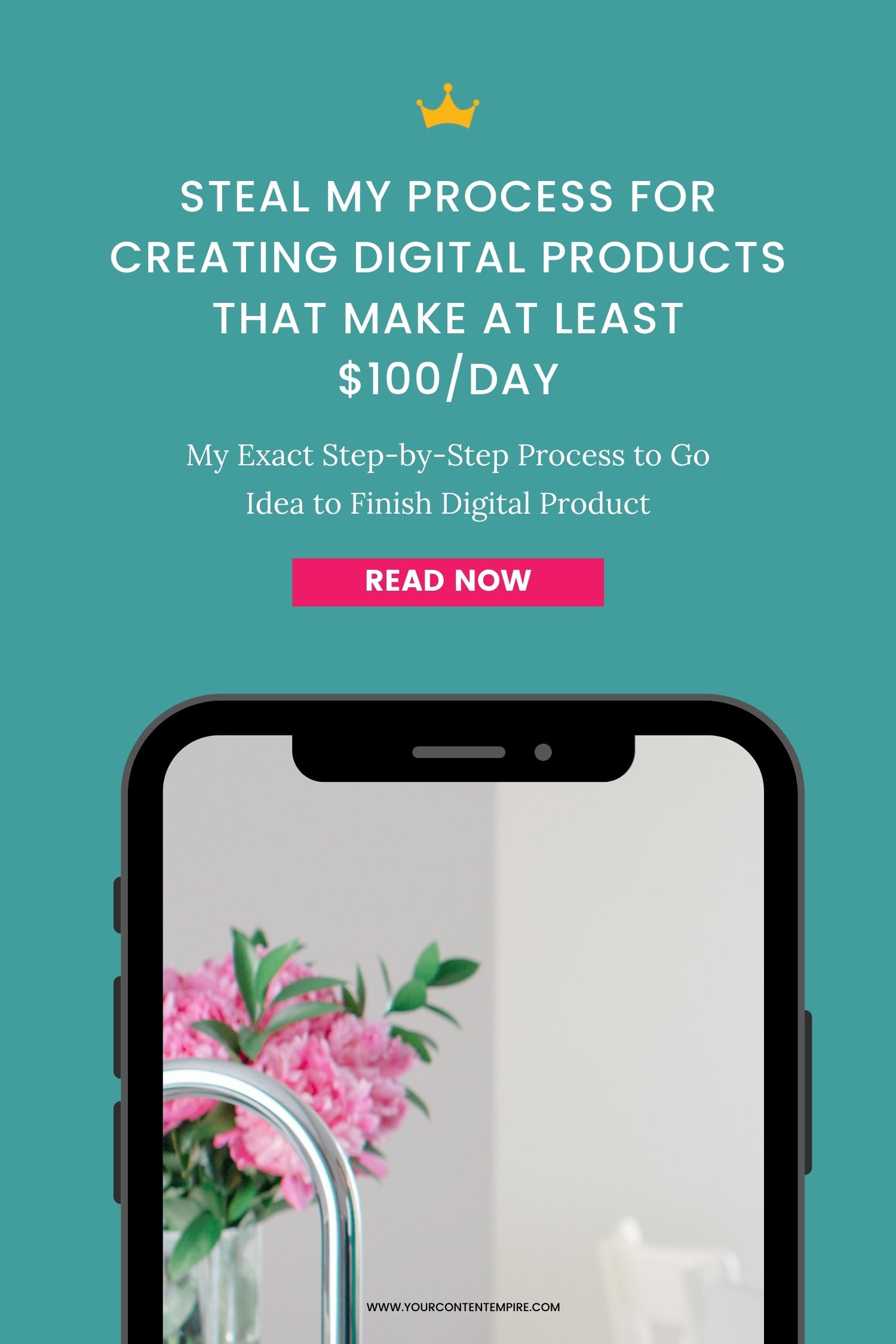Welcome back to this 7-part series that’ll take you through the steps of gaining at least 1 client in as little as 7 days. It does take work – but these things should. So if you’ve been struggling to get new clients (or your first client), this series is for YOU!
Have you read Part 1 – How to Message Your Service-Based Offer? Click here to read it
Let’s Get Started – Create Your Discovery Call System
The next part of this system deals with discovery calls.
You either love ’em or you hate ’em.
I usually hear one of two types of complaints:
Side 1 goes something like… “When people actually talk to me or get on a call with me, that’s when they see how valuable my services are and want to work with me. But how the heck do I get more people on the phone?”
While Side 2 goes something like… “I don’t like doing discovery calls because I never know what to say or how to ‘pitch’ myself and my services.”
If you relate to one of these sides, then this part of the series is for you! And truly if you are a service-based entrepreneur, chances are people are going to want to talk with you before pulling the trigger to work with you.
To start with, how do you get your prospect on the phone or on Zoom? There are two parts to this…
(1) The discovery call booking process, from the time they sign up for the call until you have them on the line
(2) How to promote your discovery calls so that your prospects are even aware that they’re available
Prefer to watch this blog post instead? Click on the video below!
Step 1 – Map Out Your Discovery Call Booking Process
Our first step is to make the process of booking a discovery call with you as seamless as possible. Think about it: If your discovery call process is a mess, what does that make your potential new client suspect about the overall process of working with you? First impressions count.
Do they fill out a form and then you get back to them to book it? Or do they go straight to a calendar to book their call?
Do they receive an email confirmation of the call and what does it say? How do you remind them about the call?
The good news is that there are plenty of tools that will let you automate this process—choose a time in your calendar, fill out a quick form that gives you some background info on what they’re looking for, add the meeting to both of your calendars and send reminders. My favourite tool for doing this is Calendly.
Download my planner here to map out your discovery call process.
Step 2 – Promoting Your Discovery Calls
Positioning your call
Now you have to know how to position the call. Think about how you can communicate the benefits of the discovery call so that it’s something that people will want to sign up for.
What’s in it for them if they talk to you? Sorry but very few people are going to sign up if it’s just an “I’m just going to pitch at you” call.
Promoting your call
Next, you have to get the option for this call in front of people. What’s your call-to-action when telling them to sign up? How will you get the word out about the discovery call?
Some options are:
- Ends of blog posts
- Newsletter
- Button on website
- Social media
- Facebook groups
- In your freebies
- Webinars
- Guest posting
- Networks
Creating a graphic for your call
After you’ve finished outlining all of these pieces of your discovery call process, create a graphic or visual ad for your discovery call. Images and text play hand in hand here in grabbing people’s attention.
This could include:
- Your headshot
- Call to action
- Main benefit for them when they take you up on this free offer
Step 3: Discovery Call Agenda
Once you have them on the phone – half your battle is over because obviously, you’ll dazzle them with your delightful personality.
But even with this in your back pocket, it’s still a good idea to have a loose script or outline of points to hit during the call to help guide the conversation.
Create an agenda for the call that starts with listening to their biggest issue (as it relates to your niche), asking intelligent questions to get the root of the problem and provide 1-2 real solutions for one of their biggest annoyances. Then move on to how you can help them even more.
Here’s a general outline that I follow in my calls:
- Greeting
- Their Problem
- 1-2 solution for their problem or pointers in the right direction
- About me // my process
- Answer any questions
- Next steps in working together
So what is your process for discovery calls? Having a plan ahead of time will help you have a lot more confidence and to guide the conversion with ease.
Step 4: Closing the Deal
The final step is closing the deal. There are two parts to this.

The first is the actual pitch at the end of your call. If you’ve followed your outline though and have explained the solution you provide, how you provide it and have given a sample of your work (by providing a real, ‘take this step’ solution to one of the issues on the call), your work here is pretty much done.
The main key is to leave the call knowing what the next step is.
You can be subtle: Is there anything else you need help with regarding x? Okay great, here are the next steps….
Or direct: Would you be interested in working together further on x and y so that you can have z? Okay, great. Here are the next steps….
I don’t believe in making this overcomplicated or even manipulative as some sales gurus would have you believe. If they want to work together, great. If not, well you got some great practice and based on how much you’ve promoted your discovery calls, you have a lot more of them to do.
The second part of closing the deal is following up. Even if they’ve said they aren’t interested or weren’t super direct about it – send them a follow-up email a few days later, thanking them for speaking with you and checking in to see if they’ve had a chance to implement your solution!
So many sales are closed in the follow-up. Don’t neglect it, especially since it shows you’re an actual person who cares about how your prospect is doing (even if they never become a customer)!
Map Your Discovery Call Process
The discovery call is such a crucial step in gaining potential client confidence, and shouldn’t be overlooked. By mapping it out like this, you’re making sure that the time you dedicate to them is actually serving a purpose, and hopefully a return.
Click on the below image to download my workbook on this process.







